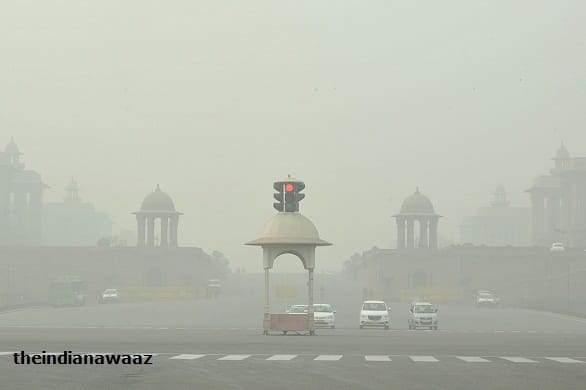
Dr. Madhur Verma AND Dr Sanjay Kalra
The national capital Delhi has the dubious distinction of being one of the most polluted cities in the country. Come winter, pollution spikes and the air quality deteriorates in the national capital region from poor to severe to severe+ category, which is currently the situation now.
There is enough evidence documenting the impact of pollution on health. The effects of air pollution on respiratory and cardiovascular diseases are well-known. This growing body of evidence cannot be disregarded.
A new 7-year study conducted in Delhi and Chennai and published in the BMJ Open Diabetes Research & Care has for shown a link between short-term and long-term exposure to high levels of fine particulate matter (PM2.5) and high fasting plasma glucose, glycosylated hemoglobin (HbA1c) and increase in the occurrence of new-onset of type 2 diabetes in India.1
A total of 12,064 participants from two urban cities in India, 6722 from Chennai and 5342 from Delhi, were selected for this study. At least half of the participants from both studies were female. They were followed from 2010 to 2017. Air pollution in localities of the participants was determined with the help of satellite data and air pollution exposure models. The annual median PM2.5 levels during the study duration were 40.2 μg/m3 in Chennai and 101.5 μg/m3 in Delhi. The WHO has recently reduced the cut-off of PM2.5 to 5μg/m3.
During the study period, Delhi had 383 incident type 2 diabetes cases, while Chennai had 360 such cases amounting to 29 new cases of diabetes per 1000 person-years. It was found that a change of 10 μg/m3 in average exposure to PM2.5 per month resulted in an increase in fasting plasma glucose of 0.40 mg/dL and 0.021 unit increase in HbA1c. When the two cities were examined separately, in Delhi, the FPG increased by 0.39 mg/dL and A1c increased by 0.018. In Chennai, the FPG increased by 0.51 mg/dL and A1c by 0.03 units.

Evaluation of association of long-term PM2.5 exposure with incidence of diabetes revealed that the risk of incident type 2 diabetes increased by 22% with every 10μg/m3 increase in annual average PM2.5 level with hazard ratio (HR) of 1.22. For exposure of 1.5 and 2 years, the HRs for incident type 2 diabetes were 1.23. For the participants from Chennai, the risk was highest (HR 1.46) against 10 μg/m3 change for 2 years of exposure, whereas for participants from Delhi, the risk was highest for 1.5 years of exposure (HR 1.24), while the risk against 2 years of exposure was lower (HR: 1.16).
The authors note that western literature has shown an association between PM2.5 levels and incident type 2 diabetes, but most of these studies were conducted in low pollution settings. There is inadequate data on this from India. Adding to the evidence about the detrimental health effects of air pollution, this pathbreaking study from two metro cities in India has for the first time shown a rise in blood glucose levels after one month of exposure (short-term) and increased risk of incident type 2 diabetes with exposure for one year or more (long-term) in India demonstrating a “temporal association between PM2.5 exposure, and higher FPG and incident type 2 diabetes”. This is a cause for concern as India already has a high burden of cardiometabolic diseases and is known as the diabetes capital of the world. Additionally, it has high levels of ambient air pollution, especially during the winter.
Mitigation measures to control ambient air pollution may reduce the rising incidence of diabetes in the country. This has to be done urgently on a war-footing. The responsibility of this lies not just with the government, but also the citizens as most of the pollution is man-made.
The traditional risk factors for diabetes are unhealthy diet, obesity and sedentary lifestyle. This study has added a new risk factor for type 2 diabetes, which is air pollution.
Reference
- Siddhartha Mandal, et al. PM2.5 exposure, glycemic markers and incidence of type 2 diabetes in two large Indian cities. BMJ Open Diabetes Res Care. 2023 Oct;11(5):e003333. doi: 10.1136/bmjdrc-2023-003333.
- Dr. Madhur Verma, Assistant Professor, Dept. of Community & Family Medicine, AIIMS, Bathinda, Punjab; Dr Sanjay Kalra, DM (AIIMS); President SAFES, Bharti Hospital, Karnal, Haryana 05 November 2023
